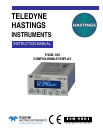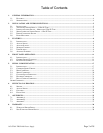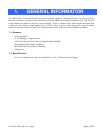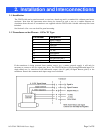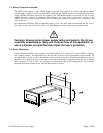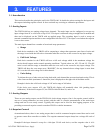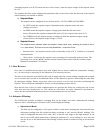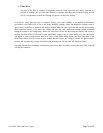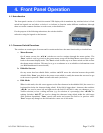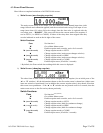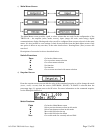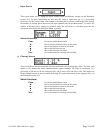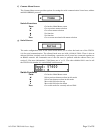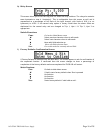
165-072011 THCD-100 Power Supply Page 8 of 28
3. FEATURES
3.1. Introduction
This section describes the principles used in the THCD-100. It details the various settings for the inputs and
the outputs including setpoint control. It does not detail any servicing or calibration procedures.
3.2. Analog Inputs
The THCD-100 has two analog voltage input channels. The main input can be configured to accept any
input voltage from 0V to a full scale of up to 10V. This input is calibrated using a straight line fit method and
then can be displayed on the THCD with an applied range. The secondary input is used to accept an
external command setpoint and has a non-configurable full scale of 5V. This input is used when the setpoint
is set to slave source.
The main input channel has a number of associated setup parameters:
a)
Range
Each device attached to the THCD will be outputting a voltage that represents some form of units and
the range is used with the full scale to determine what the user sees on the screen for any input voltage.
b)
Full Scale Voltage
Each device attached to the THCD will have a full scale voltage which is the maximum voltage the
device should output under normal operating conditions. Typical values are 10V, 5V and 1V. The full
scale is used with the range to determine what the user sees on the screen for any input voltage. The
THCD will show the over range error (“RANGE!”) for any channel whose voltage input is more than
15% over the full scale voltage set for that channel.
c)
Units String
To inform the user of what units are being dealt with, each channel has an associated units string. This is
a free form text field (maximum 5 characters) that is displayed on the right side of the Main screen.
Example A device has a full scale voltage of 10V and a range of 100 mbar.
If the device now outputs 10V, the THCD-100 display will nominally show 100 (pending input
calibration). If the device outputs 5V, the THCD-100 will show 50, and so on.
3.3. Analog Outputs
There are two analog outputs on the THCD-100, both voltage outputs. One is for setpoint control with its
own set of setup parameters (see next section) and the other is a simple retransmission of the main input
voltage and has no user setup control. Typically this output can be used for data logging purposes or for
providing an external setpoint control to another THCD or similar instrument.
3.4. Setpoint Control
As mentioned above, there is one analog output that is used for command setpoint control that can be used
to operate a mass flow controller or similar. The setpoint command output always has a voltage full scale of
5V.
Example If the input channel is setup for a 100 slpm 5V full scale device, and the setpoint value is 10.0



